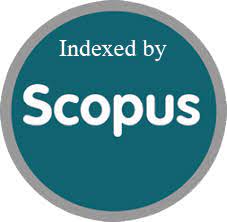Machine Learning based Rainfall
DOI:
https://doi.org/10.63682/jns.v14i15S.3861Keywords:
Rainfall prediction, Machine learning, Supervised learning, Classification, Meteorological data, Feature selection, Time series analysis, Remote sensing data, Weather forecasting, Predictive analyticsAbstract
Predicting the amount of rain is important for many industries, including agriculture, water resource management, and disaster relief. The intricate spatiotemporal patterns of rainfall are often difficult for traditional technologies to adequately represent. By utilising historical data and meteorological variables, machine learning (ML) techniques present a viable method for improving rainfall prediction. Rainfall prediction tasks have been subjected to a variety of machine learning techniques, including as decision trees, random forests, support vector machines (SVM), and deep learning models. Hybrid models and ensemble approaches have also been suggested as ways to increase forecast robustness and accuracy. ML-based rainfall prediction exhibits a great deal of promise for rapid and accurate forecasting, supporting decision-making in crucial industries affected by weather variability.
Downloads
Metrics
References
Casolaro A, Capone V, Iannuzzo G, Camastra F, (2023). Deep Learning for Time Series Forecasting: Advances and Open Problems. Information. 14(11):598
Dimitri P. Solomatine, Avi Ostfeld, (2008) Data-driven modelling: some past experiences and new approaches. Journal of Hydroinformatics, 10 (1): 3–22.
S. Priyadarsini and R. Viswanathan (2014) Web usage mining for better understanding of user pattern to improve productivity of E-business, International Journal of Applied Engineering Research (IJAER), Volume 9, Number 11 (2014) pp.1753-1763.
Ejike . O, D. L. Ndzi, and A.-H. Al-Hassani, (2021). Logistic regression based next-day rain prediction model, in Proc. Int. Conf. Commun. Inf. Technol. (ICICT), Jun. 2021, pp. 262–267.
Viswanathan. R ,Jagan J, Pijush Samui, and Porchelvan P (2015). Spatial Variabilityof Rock Depth Using Simple Kriging, Ordinary Kriging, RVM and MPMR, Geotech GeolEng,Vol. 33, pp. 69–78.
Gomez JA, Patino JE, Duque JC, Passos S (2020). Spatiotemporal Modelling of Urban Growth Using Machine Learning. Remote Sensing. 12(1):109.
Hao R, Bai Z. (2023). Comparative Study for Daily Streamflow Simulation with Different Machine Learning Methods. Water. 15(6):1179.
N.Deepa,R.Chandrasekar,R.Viswanathan,R.Sathiyaseelan(2014)DimensionReductionusingMultivariateStatisticalModel,InternationalJournalofAppliedEngineering Research, Volume 9, Number 14 (2014) pp. 2531-2538.
Hong, Y., Hsu, K. L., Sorooshian, S., & Gao, X. (2004). Precipitation estimation from remotely sensed imagery using an artificial neural network cloud classification system. Journal of Applied Meteorology, 43(12), 1834-1853.
Jie Liu, Lei Xu, Nengcheng Chen, (2022). A spatiotemporal deep learning model ST-LSTM-SA for hourly rainfall forecasting using radar echo images, Journal of Hydrology, Volume 609, 127748.
Viswanathan R, Pradeep Kurup, and Pijush Samui (2015). Examining Efficacy ofMetamodels in predicting Ground Water Table, International Journal of PerformabilityEngineering,Vol. 11, No. 3, pp. 275-281.
Jihoon Ko, Kyuhan Lee, Hyunjin Hwang, Seok-Geun Oh, Seok-Woo Son, Kijung Shin, (2022). Effective training strategies for deep-learning-based precipitation nowcasting and estimation, Computers & Geosciences, Volume 161, 105072.
Karpatne A, Ebert-Uphoff I, Ravela S, H. A. Babaie and V. Kumar, (2019). Machine Learning for the Geosciences: Challenges and Opportunities, in IEEE Transactions on Knowledge and Data Engineering, vol. 31, no. 8, pp. 1544-1554
Kofidou, M., Stathopoulos, S. & Gemitzi, A, (2023). Review on spatial downscaling of satellite derived precipitation estimates. Environ Earth Sci 82, 424.
Kumar V, Azamathulla HM, Sharma KV, Mehta DJ, Maharaj KT, (2023). The State of the Art in Deep Learning Applications, Challenges, and Future Prospects: A Comprehensive Review of Flood Forecasting and Management. Sustainability. 15(13):10543.
R. Viswanathan, et.al (2019) Network Intrusion Detection System Using Artificial Neural Network in Data Mining Journal of Recent Patents on Computer Science (BMS-CSENG-2019-HT15-476-18).
Kumarasiri A. D. and U. J. Sonnadara, (2008). Performance of an artificial neural network on forecasting the daily occurrence and annual depth of rainfall at a tropical site, Hydrological Processes, vol. 22, no. 17, pp. 3535–3542, Aug. 2008.
Maier, H. R., Kapelan, Z., Kasprzyk, J., Kollat, J., Matott, L. S., Cunha, M. C., & Schwanenberg, D. (2014). Evolutionary algorithms and other metaheuristics in water resources: Current status, research challenges and future directions. Environmental Modelling & Software, 62, 271-299.
Mallikarjuna, B., Sathish, K., Krishna, P.V., & Viswanathan, R. (2020). The effective SVM-based binary prediction of ground water table. Evolutionary Intelligence, 14, 779 - 787.
Muhammed Sit; Bekir Z. Demiray; Zhongrun Xiang; Gregory J. Ewing; Yusuf Sermet; Ibrahim Demir, (2020). A comprehensive review of deep learning applications in hydrology and water resources, Water Sci Technology, 82 (12): 2635 – 2670.
Nolan A. G. and W. J. Graco, (2017). Using the results of capstone analysis to predict a weather outcome, in Advances in Data Mining. Applications and Theoretical Aspects. Singapore: Springer, 2017, pp. 269–277.
Viswanathan, R. and Samui, P (2015). Determination of rock depth Using artificial intelligence techniques, Geoscience Frontiers, Vol. 7 (1), pp. 61-66.
Viswanathan, R. and Samui, P (2015). Determination of rock depth Using artificial intelligence techniques, Geoscience Frontiers, Vol. 1, pp. 6.
Shin Y, Kim T, Hong S, Lee S, Lee E, Hong S, Lee C, Kim T, Park MS, Park J, et al. (2020) Prediction of Chlorophyll-a Concentrations in the Nakdong River Using Machine Learning Methods. Water. 12(6):1822.
Sun AY and Tang G, (2020). Downscaling Satellite and Reanalysis Precipitation Products Using Attention-Based Deep Convolutional Neural Nets. Front. Water 2:536743.
Zhang Y, Wu K, Zhang J, Zhang F, Xiao H, Wang F, Zhou J, Song Y, Peng L (2021). Estimating Rainfall with Multi-Resource Data over East Asia Based on Machine Learning. Remote Sensing. 13(16):3332
Downloads
Published
How to Cite
Issue
Section
License

This work is licensed under a Creative Commons Attribution 4.0 International License.
You are free to:
- Share — copy and redistribute the material in any medium or format
- Adapt — remix, transform, and build upon the material for any purpose, even commercially.
Terms:
- Attribution — You must give appropriate credit, provide a link to the license, and indicate if changes were made. You may do so in any reasonable manner, but not in any way that suggests the licensor endorses you or your use.
- No additional restrictions — You may not apply legal terms or technological measures that legally restrict others from doing anything the license permits.










